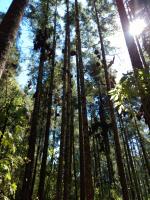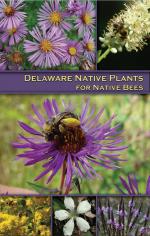As a science-based organization, the Xerces Society produces dozens of publications annually, all of which employ the best available research to guide effective conservation efforts. Our publications range from guidelines for land managers, to brochures offering overviews of key concepts related to invertebrate conservation, from books about supporting pollinators in farmland, to region-specific plant lists. We hope that whatever you are seeking—whether it's guidance on making a home or community garden pollinator-friendly, advice on developing a local pesticide reduction strategy, or detailed information on restoring habitat—you will find it here!
Find Publications
Use the search functions to sort by publication type (books, guidelines, fact sheets, etc.), location, and/or subject (agriculture, gardens, pollinators, pesticides, etc.).
with scientific literature about commercial bumble bees and bee pathogens (August 26, 2014)
Pathogens from managed pollinators are thought to have played a significant role in that decline. Thus, as we explained in our January 2010 petition, regulation of commercial bumble bees is a highly time-sensitive issue... we are writing to provide you with a short synthesis and reference list of some key and recent studies regarding commercial bumble bees and bumble bee pathogens. It is our hope that this science will inform and help activate your efforts to protect native bumble bees.
Management Guidelines for Monarch Butterfly Overwintering Habitat
The guidelines provide an overview of the biology and conservation of western monarchs; step-by-step guidance for developing a site-specific management plan, and overall guidance on topics including tree management, shrub and forb management, and visitor and public access issues. The document also includes a list of monarch-attractive native nectar plants suitable for coastal areas.
Watch monarchs flutter among oyamel fir trees in Santuario Piedra Herrada, Mexico.
How to Create Habitat for Pollinator Insects on Golf Courses
These guidelines are focused on providing habitat for pollinator insects, primarily native bees. Making Room provides information on the natural history and importance of native bees, and offers practical advice on how to provide flower-rich areas and nesting sites on golf courses. This is supported by lists of relevant reading, helpful organizations, and Internet resources.
Nest Construction and Management
There are many simple and successful ways to make artificial nests for native bees. However, keeping the nests clean is important to limit disease build-up to keep these nests from doing more harm than good. This fact sheet provides an overview of tunnel-nesting bee biology, and guidance on how to make and manage nests.
There are more than 3,600 species of native bees in North America. Together they form the most important group of pollinators. This fact sheet gives information on how to provide nest sites for native bees, including nesting blocks and bare ground for solitary-nesting bees, and nesting boxes for bumble bees.
39 species of plants native to Delaware that provide pollen, nectar, and, in some cases, nesting sites to native bees.




